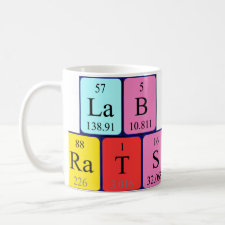
Authors: Xu WZ, Yang WM, Zhou W
Article Title: Selective Solid-phase Extraction of Pb(II) Ions Using an Ion-imprinted Functionalized Sodium Trititanate Whisker Adsorbent Prepared by a Surface-imprinting Technique.
Publication date: 2010
Journal: Adsorption Science & Technology
Volume: 28
Issue: (6)
Page numbers: 509-519.
DOI: 10.1260/0263-6174.28.6.509
Alternative URL: http://journals.sagepub.com/doi/abs/10.1260/0263-6174.28.6.509
Abstract: Lead(H) ion-imprinted functionalized sodium trititanate whisker polymers [Pb(II)-IIPs/Na2Ti3O7] for solid-phase extraction (SPE) were prepared by the copolymerization of Pb(II) as the template ion, chitosan (CTS) as the functional monomer and gamma-glycidoxypropyl trimethoxysilane (KH-560) as the linking agent in the presence of sodium trititanate whiskers (Na2Ti3O7) as the carrier. The Pb(II)-IIPs/Na2Ti3O7 materials capable of selectively adsorbing Pb(II) ions thus obtained were used for the pre-concentration and determination of the Pb(II) ion concentration in Chinese traditional medicine samples. The prepared sorbent was characterized by Fourier-transform infrared spectroscopy (FT-IR) and scanning electron microscopy (SEM). A series of batch adsorption experiments was performed to evaluate the adsorption behaviour of the Pb(II)-IIPs/Na2Ti3O7 materials towards Pb(II) ions, as assessed by inductively coupled plasma-atomic emission spectrometry (ICP-AES). The maximum adsorption capacity, the distribution coefficient (K) and the relative selectivity coefficients (k') of Pb(II)-IIPs for Pb(II)/Co(II), Pb(II)/Cd(II), Pb(II)/Cu(II), Pb(II)/Hg(II), Pb(II)/Mg(II), Pb(II)/Mn(II), Pb(II)/Zn(II) and Pb(II)/Ni(II) were calculated. Compared with non-ion-imprinted polymers functionalized sodium trititanate whisker polymers (non-IIPs/Na2Ti3O7), the Pb(II)-IIPs/Na2Ti3O7 material had a higher selectivity towards Pb(II) ions. The relative selectivity factor (k') values were all greater than 2.5. The developed method was successfully applied to the determination of the amounts of trace Pb(II) ions in traditional Chinese medicine samples with satisfactory results
Template and target information: lead ion, Pb(II)



Join the Society for Molecular Imprinting

New items RSS feed
Sign-up for e-mail updates:
Choose between receiving an occasional newsletter or more frequent e-mail alerts.
Click here to go to the sign-up page.
Is your name elemental or peptidic? Enter your name and find out by clicking either of the buttons below!
Other products you may like:
 MIPdatabase
MIPdatabase









